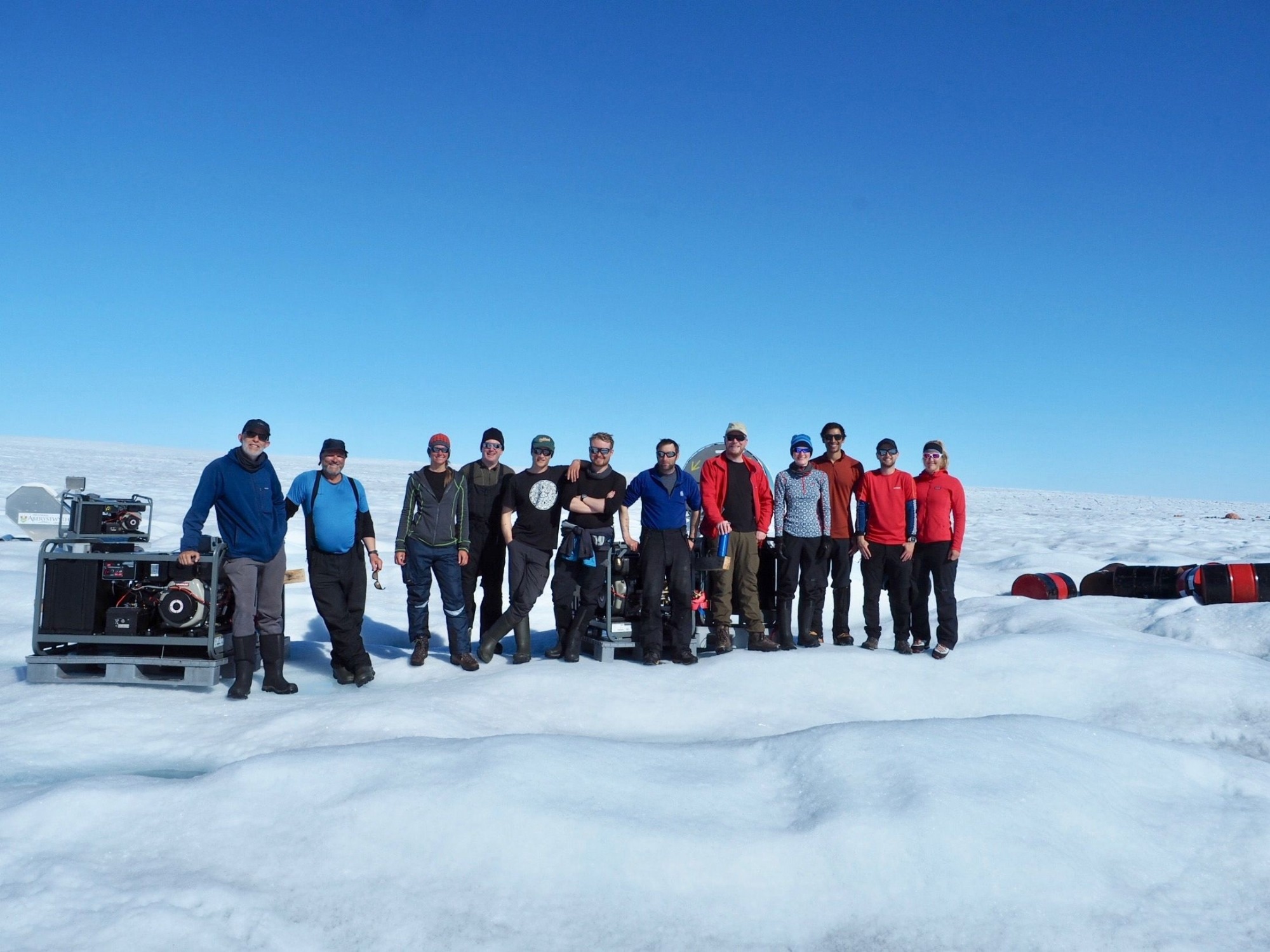Scientists discovered that glacier movement in Greenland is more complicated than it sounds, with deformation in warmer ice comprising small amounts of water accounting for motion earlier thought to be caused by sliding where the ice meets the bedrock beneath.

Image Credit: Robert Law.
The international group, guided by the University of Cambridge, utilized computer modeling techniques based on previous fiber-optic measurements from the Greenland Ice Sheet to create a more comprehensive picture of the world’s second-largest ice sheet’s behavior.
The findings, published in the journal Science Advances, could help scientists make precise predictions about how the Greenland Ice Sheet will progress in response to climate change.
Since the 1980s, mass loss from the Greenland Ice Sheet has increased sixfold, making it the single largest contributor to global sea-level rise. Around half of this mass loss is caused by surface meltwater runoff, while the other half is caused by fast-flowing glaciers that reach the sea and discharge ice directly into the ocean.
The European Research Council-funded RESPONDER project is investigating the dynamics of the Greenland Ice Sheet through a combination of physical measurements and computer modeling.
The current study expands on previous observations made by the RESPONDER team in 2021 using fiber-optic cables. The team discovered that the temperature of ice sheets is far more heterogeneous than previously thought, with areas of highly localized deformation warming the ice even more.
The borehole measurements also revealed that the ice at the base contains trace amounts of water, up to about 2%. This mixed ice-water layer, known as temperate ice, was around 8 m thick in some parts of the ice sheet but up to 70 m thick in others.
The addition of even tiny amounts of water softens the ice considerably, transforming it into a unique material with substantially altered mechanical characteristics. We wanted to know why the thickness of this layer varied so much, because if we don’t fully understand it, our models of ice sheet behavior won’t fully capture the physical processes occurring in nature.
Dr. Robert Law, Study First Author, University of Bergen
Dr. Robert Law carried out the research while at Cambridge’s Scott Polar Research Institute.
The textbook view of glacier motion is that it occurs with a neat partitioning of basal sliding and internal deformation, and that both are well understood. But that’s not what we observed when we looked carefully in boreholes with new techniques. With less detailed observations in the past, it was difficult to get a really good picture of how the ice sheet moves and even more challenging to replicate it with computer models.
Poul Christoffersen, Study Co-Author, Professor and Project Leader, RESPONDER, SPRI
Law, Christoffersen, and their co-workers from the United Kingdom, the United States, Switzerland, and France created a model based on previous borehole measurements that can contribute to all the new observations.
They considered natural variations in the landscape at the base of the ice, full of rocky hills, basins, and deep fjords in Greenland. The scientists found that when a glacier travels over a large obstacle or hill, it deforms and heats up, extending several hundred meters from the ice sheet’s base. Earlier, models ignored this effect.
The stress on the ice base is highest at the tops of these hills, which leads to more basal sliding. But so far most models have not accounted for all of these variations in the landscape.
Dr. Robert Law, Study First Author, University of Bergen
By integrating these variations, the investigators’ model demonstrated that a variable layer of temperate ice forms as the glacier moves across the landscape, regardless of whether the glacier is moving quickly or slowly. The thickness of this temperate ice layer agrees with previous borehole measurements but deviates substantially from standard modeling techniques used to estimate sea level rise caused by ice sheets.
Law notes, “Because of this hilly landscape, the ice can go from sliding across its base almost entirely to hardly sliding at all, over short distances of just a few kilometers. This directly influences the thermal structure—if you’ve got less basal sliding then you’ve got more internal deformation and heating, which can lead to the layer of temperate ice getting thicker, altering the mechanical properties of the ice over a broad area.”
“This temperate basal ice layer can actually act like a deformation bridge between hills, facilitating the fast motion of the much colder ice directly above it,” added Law.
The scientists hope to use their newfound knowledge to develop more accurate descriptions of ice motion for ice sheet models used to forecast future sea level rise.
The European Union and the Natural Environment Research Council (NERC), which is part of UK Research and Innovation (UKRI), contributed to the research.
Journal Reference:
Law, R., et al. (2023) Complex motion of Greenland ice sheet outlet glaciers with basal temperate ice. Science Advances. doi.org/10.1126/sciadv.abq5180.